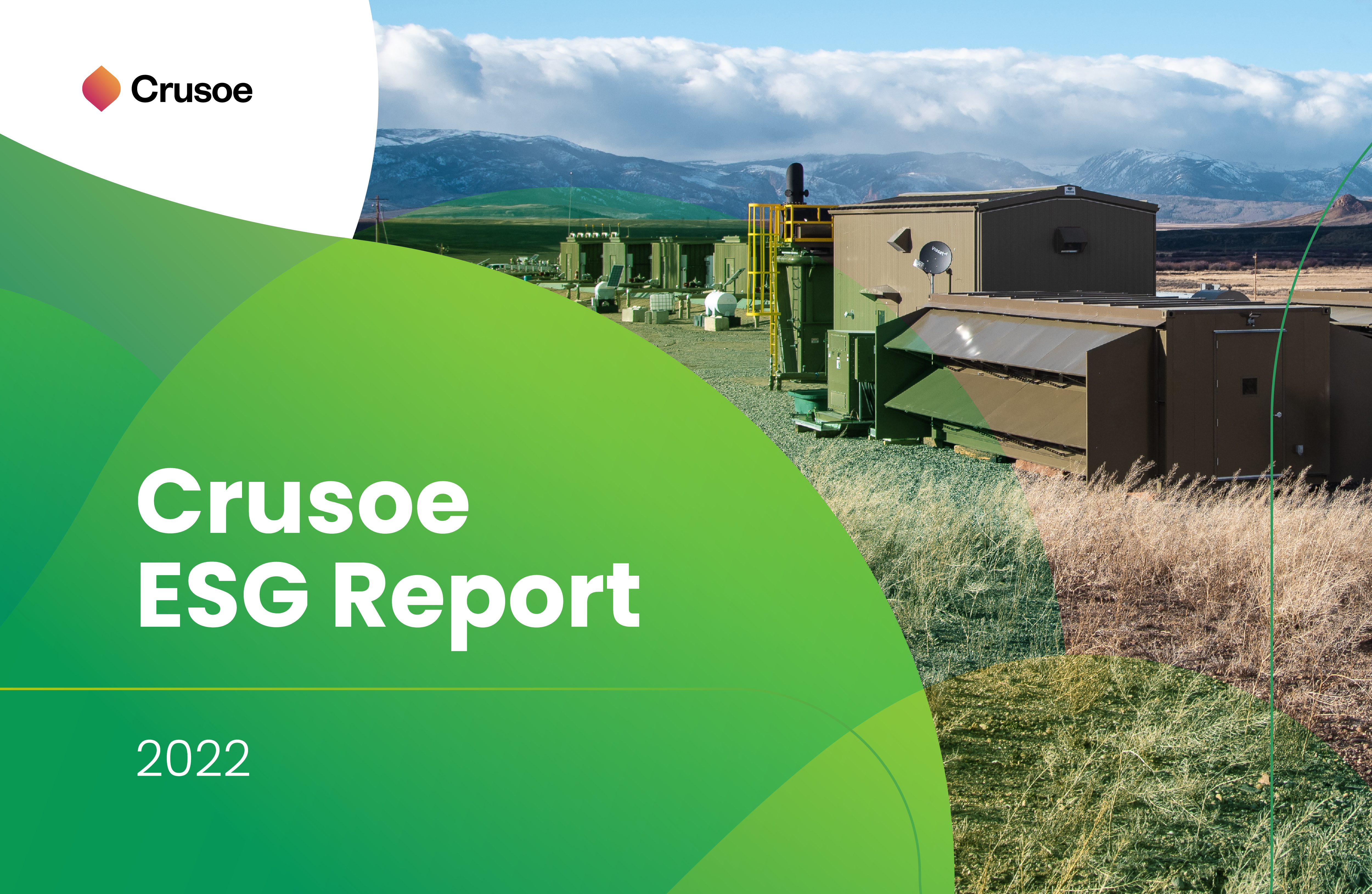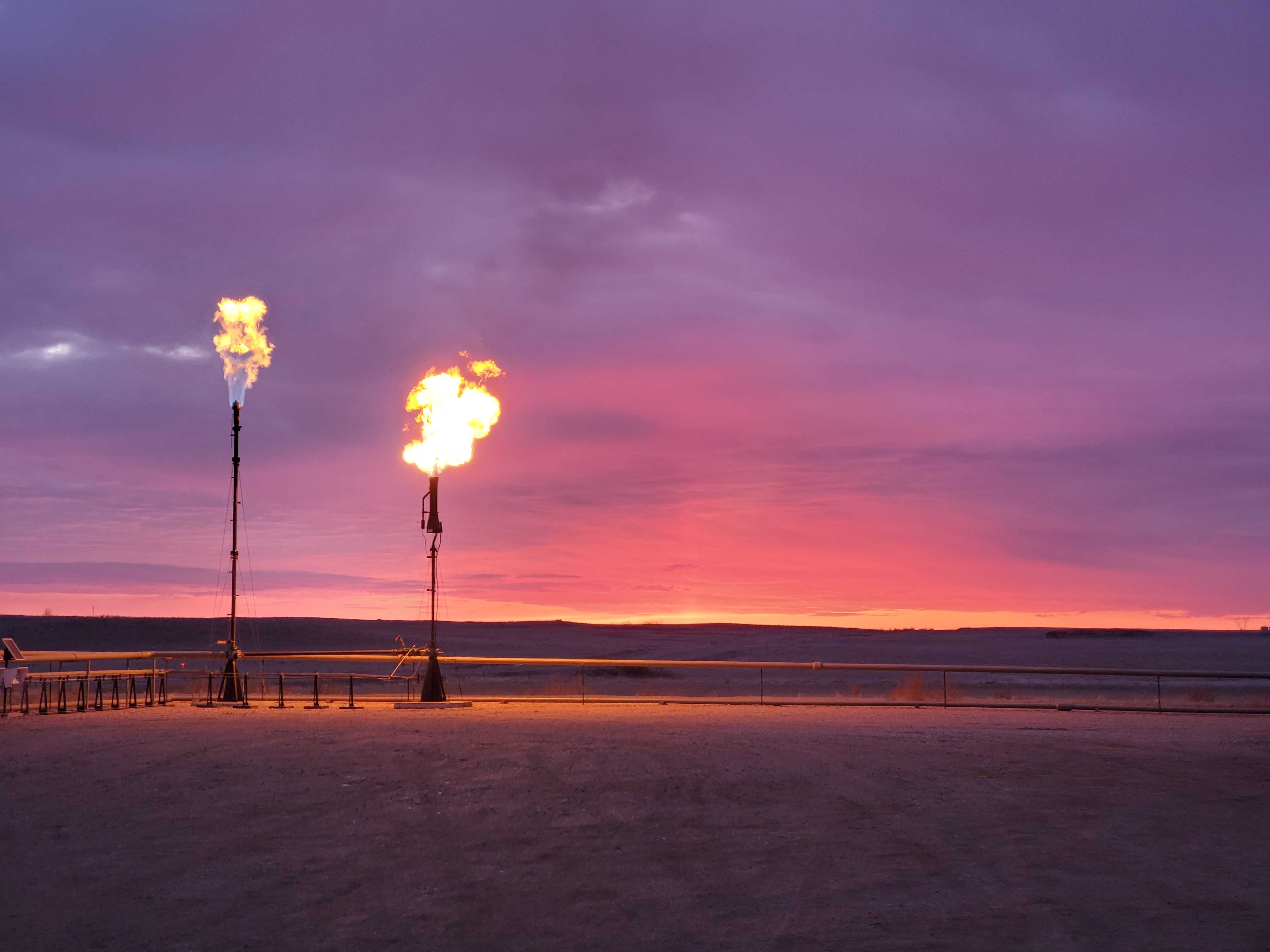
Minimizing the Harm of Methane Emissions Through Flare Reduction
Last year, in its Sixth Assessment Report, the United Nations Intergovernmental Panel on Climate Change (UN IPCC) concluded that deep reductions of greenhouse gas emissions, particularly reduction of methane emissions, would be needed to mitigate global warming. In response, at the UN Climate Change Conference COP26, more than 100 countries (representing more than 70% of global GDP) signed the Global Methane Pledge, promising collective action to reduce global methane emissions by at least 30 percent by 2030.
Methane, the main component of natural gas, is a potent greenhouse gas that has 82.5x more global warming potential than carbon dioxide over a 20-year period. According to the UN IPCC, approximately a third of methane emissions comes from the production and transportation of fossil fuels and upwards of 80% of this can be avoided with existing technologies for less than $50/ton CO2-equivalent – making methane reduction one of the most cost effective and easiest solutions to reducing climate change in the short term.
To combat climate change, governments and companies around the globe are taking action to reduce methane emissions, including through the reduction of natural gas flaring. In the United States, the Environmental Protection Agency (EPA) has proposed a rule that would require companies to stop routine flaring if they have a way to get the gas to market, and producers without access to a pipeline would be required to use the gas beneficially on-site or route it to a device that reduces methane emissions by at least 95 percent. In addition, the recently enacted Inflation Reduction Act of 2022 also contained incentives for methane mitigation and monitoring as well as fees on methane emissions that exceed certain thresholds due to venting, flaring, or negligent releases.
With the reduction of methane emissions emerging as a global priority in the fight against climate change, it may be helpful to take a step back to understand natural gas flaring’s role in methane emissions, and why Crusoe’s Digital Flare Mitigation® technology is a key part of the solution.
What is Natural Gas Flaring?
Natural gas flaring is the controlled combustion of volatile hydrocarbons (hydrocarbons in a gas phase) that are released as a byproduct of oil production, typically in situations where a gas pipeline is not available. The practice originated in the 1800s as a safety precaution to avoid the accumulation of combustible gasses at ground level where sparks or cigarettes could create a fire or explosion. Flaring’s use steadily expanded globally wherever oil is produced in places without sufficient or timely natural gas transportation infrastructure such as pipelines, gas processing plants, compressor stations and related systems. Because the value of natural gas is minimal compared to that of oil, if the oil company doesn’t have access to a pipeline or if the gas volumes are too small to justify infrastructure investment, then it is often cheapest and easiest for the oil producer to burn its associated gas in a flare, essentially disposing of a wasted byproduct of oil production.
The Global Impact of Flaring
There are two major concerns with natural gas flaring. First, it is a tremendous waste of a valuable and finite natural energy resource. And second, it has significant negative impacts on the environment.
According to the World Bank’s Global Gas Flaring Tracker Report, 144 billion cubic meters (bcm) of natural gas was flared in 2021. That much gas could have generated 1,800 Terawatt hours (TWh) of energy – or almost two-thirds of the European Union’s net domestic electricity generation. Instead, it was burned away with no discernible value.
But the biggest problem with flaring is actually the methane that is not fully combusted. A recent study led by scientists at the University of Michigan and published in the journal Science found that in the U.S., flares only effectively destroyed 91.1% of methane, with the rest escaping into the atmosphere. This finding, based on surveys of more than 300 flares across the United States, indicates that the oil industry is producing nearly five times more methane emissions from flaring than prior EPA estimates, which have long-assumed a 98% combustion efficiency for flares. As mentioned earlier, over a 20-year timeframe, methane is over 80x more potent than carbon dioxide as a greenhouse gas, meaning the escaped methane will significantly contribute to climate change, especially over the short-term period most relevant to mid-century climate goals and pledges.
Digital Flare Mitigation®
Crusoe’s Digital Flare Mitigation® (DFM) technology offers oil producers an economic and operationally practical alternative to natural gas flaring that is a win-win by addressing both of the major problems with flaring.
First, DFM systems are deployed directly to the oil wellsite to convert the stranded gas, which would otherwise be wasted and flared, into electricity that is used to power modular data centers. These data centers support high-performance computing (HPC), including cryptocurrency transaction processing (aka “mining”) as well as CrusoeCloud, a cloud computing platform for computational biology, artificial intelligence, 3D rendering and other of HPC workloads.
In addition to reducing energy waste by creating a beneficial use for the natural gas onsite, we are also able to power advanced computing needs without putting additional demands on the energy grid. 60% of electricity in the U.S. is still generated from fossil fuels, so displacing this workload from the grid by using previously wasted energy sources further reduces the environmental impact of our data centers and all of the wonderful innovations, insights and economic activities they enable.
Second, through a process called stoichiometric combustion, Crusoe’s Digital Flare Mitigation® technology achieves a combustion efficiency of 99.9% (versus an average of 91.1% for flares), thus reduces methane emissions approximately 99% and carbon dioxide equivalent emissions by up to 68.6%. By deploying DFM systems and eliminating long-term flares, we can clean up the least efficient parts of oil and gas production operations. In fact, the Colorado Sun recently published an expose in which an environmental activist group sent FLIR thermal-imaging cameras out to an oil field and found fugitive emissions billowing from flare combustors. Nearby, the same investigator found “just a wisp of emissions from two Crusoe generators” with the environmental advocate noting, “They do appear to be more effective.”
To be clear, Crusoe only operates where there’s an obvious counterfactual: without Crusoe, gas would be flared. Our mission is to align the future of computing with the future of the climate and we do that by enabling oil producers to reduce flaring and associated methane emissions. To ensure alignment with this mission, we have a strict company policy not to use gas that could reasonably be brought to traditional markets via pipeline or other methods, or to incentivize new drilling for natural gas production. Whenever we deploy our DFM systems, we know we are reducing methane emissions and reducing energy waste.
With billions of cubic feet of gas being flared every day around the globe, there is no shortage of opportunity to deploy this strategy. At the time of this writing, Crusoe is preventing approximately 20 million cubic feet of gas flaring every day in about 125 modular data centers operating throughout the oilfields of America. Those DFM systems are reducing CO2-equivalent emissions by approximately 800,000 tons per year, primarily through the complete combustion of otherwise vented methane. That emissions reduction is equivalent to removing about 170,000 cars from the road. Excitingly, we are on a path to exceed 1 million tons per year of CO2e abatement in 2023 and aim to continue scaling our environmentally-aligned computing solutions to even greater heights into the future.
Perhaps most important to our scalability and success: oil and gas companies have begun to see and celebrate the benefits that DFM can bring to their operations. During a recent panel discussion at a large energy conference in Houston, one of Crusoe’s producer partners stated that Digital Flare Mitigation had enabled a 75% reduction of flaring across the operator’s portfolio. Other operators are utilizing DFM to hit aggressive flare elimination and methane reduction goals set by boards of directors and executive management teams. By providing a scaled, reliable, safe and cost-free solution to flaring, Crusoe has provided oil producers with the “easy button” at a time when demand for oil is at a maximum but investor tolerance for flaring is at a minimum.
An “Innovative” Solution
The world needs to make significant strides in reducing methane emissions to mitigate climate change. This is why we are proud that Crusoe’s technology has been recognized by the World Bank's Global Gas Flaring Reduction Partnership (GGFR), a multi-stakeholder initiative that brings together governments, oil companies, and multilateral organizations committed to ending routine gas flaring at oil production sites around the world, as an “innovative” solution to reducing flaring. The GGFR views flaring reduction as both critical to mitigating methane emissions and to boosting shared prosperity – by helping countries move toward a more sustainable energy path and reducing the waste of valuable natural gas energy resources that could be used to advance development.
Recently, the White House Office of Science and Technology Policy (OSTP) issued a report “Climate and energy implications of crypto-assets in the United States.” Although it focused on concerns that energy-intensive crypto-assets could hinder efforts to achieve U.S. climate goals, it also highlighted Digital Flare Mitigation not only as an exception, but also as a potential solution to addressing climate change: “crypto-asset mining operations that capture vented methane to produce electricity can yield positive results for the climate, by converting the potent methane to CO2 during combustion.”
The hard truth is that transitioning to a clean energy economy is going to take time – at least decades and more likely generations. While we work towards that future, we need to ensure that we minimize the harmful climate effects of our existing energy production. Flare reduction – including through Crusoe’s Digital Flare Mitigation® technology – can help reduce potent methane emissions, and buy us more time to reach our near- and mid-term climate targets, both in the U.S. and worldwide. We call this approach “extending the climate runway,” reducing methane emissions today to buy more time for carbon-free solutions to scale and shoulder a meaningful load of human economies. Methane is the most potent and lowest-hanging fruit available to us as a climate runway extension tool, and Crusoe has scaled an economic and operationally practical system to unlock this environmental opportunity.
About the Authors
Hui Wen Chan is the Senior Director of ESG at Crusoe Energy Systems. Prior to joining Crusoe, Hui was Head of ESG at the shared electric scooter company Spin. Before that, she led ESG strategy and reporting and climate risk management at Citi. She also served as the North America Representative on the UN Environment Program Finance Initiative (UNEP FI) Banking Committee and worked on the development of key sustainable finance frameworks such as the Poseidon Principles and the UN Principles for Responsible Banking. Before joining Citi, she advised clients across a variety of industries at Sagent Advisors, Inc. and Mercer Management Consulting (now Oliver Wyman Group) and worked in global health at the Clinton Foundation and the International AIDS Vaccine Initiative. Hui is a graduate of Harvard College and Harvard Business School.
Cully Cavness is the Co-Founder, President and Chief Operating Officer at Crusoe Energy Systems. Prior to co-founding Crusoe, Cully was the Vice President of Finance at Highlands Natural Resources, a private equity sponsored oil exploration and production firm, and previously was an investment banker at the energy-focused boutique Petrie Partners. Prior to those roles in the oil and gas industry, Cully was a Business Development Manager at renewable power developers Global Geothermal and Recurrent Engineering. He holds a bachelor's degree in geology from Middlebury College, an MBA from the University of Oxford and was a 2010 Thomas J. Watson Fellow in the subject of environmental energy economics.


